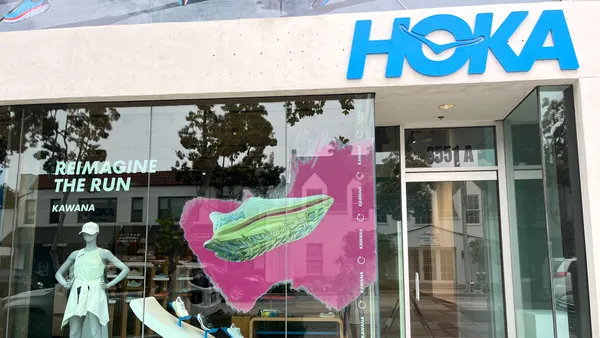Dive Brief:
-
Holiday sales in the U.S. this year are poised to log a 4% year-over-year increase, according to a forecast from Coresight Research. Total retail sales (excluding automobiles and gasoline) in November and December might even top that, "given favorable economic conditions, such as an extremely low unemployment rate, wage growth and modest inflation," according to the report.
-
E-commerce growth will be even stronger, expected by Coresight to gain more share of total sales over the holiday season. Online retail sales will rise by almost 16% year over year, will be nearly 16% of all retail sales and some 20% of nonfood retail sales in the final quarter, Coresight said.
-
Growth will be abetted by the length of the season this year. There's an extra shopping day between Thanksgiving and Christmas compared to last year, making the holiday season "the longest that it can be" with a total of 32 days between the two holidays, according to the report, which was emailed to Retail Dive.
Dive Insight:
The estimate comes on the heels of strong holiday sales last year, making comparisons difficult, Coresight noted. "Our 4% growth estimate for holiday sales this year compares with 5.5% growth last year and an average increase of 2.8% over the last 10 years," according to the report.
This year could be the biggest online season yet, according to the retail think tank, considering that "e-commerce's share of retail sales routinely jumps over the holiday period as consumers turn to the online channel for functional 'shopping-list' gift purchases," according to the report. Coresight expects that, for the whole year, more than a third of consumer electronics purchases and more than a fifth of apparel purchases will take place online, and that will jump over the holidays.
Such strong holiday sales are likely thanks to the robust U.S. economy, which continues to add some 200,000 jobs each month for an unemployment rate of 3.9%, a 50 basis points improvement from last year, Coresight noted. That's fueling consumer confidence, though that's at a relatively low point as measured by the University of Michigan's Consumer Sentiment Index. The index pegs consumer confidence at 96.8, the lowest level since January, but quite an improvement from both the post-recession reading of 70.8 in June 2009 and the 83 average reading from the start of the ensuing recovery, Coresight said.
Several observers have warned that rising fuel prices and impending inflation could dampen that, but overall "the macro landscape looks good for the 2018 holiday season," Coresight said, noting that gas prices remain under $3.00 per-gallon, wage growth is reaching 3%, inflation is otherwise "relatively benign" and many consumers are enjoying lower tax bills.
But that doesn't mean that holiday shoppers won't be careful about their spending. Coresight cited a July Prosper Insights & Analytics survey that indicates a mixed season, in light of the fact that while more people (by 250 basis points) say they'll spend more at the holidays this year, but more (by 70 basis points) also said they plan to spend less.
"These findings further bolster our expectation that the holiday season will be robust even though it may be more mixed than current trajectories imply," Coresight said. "Shoppers stand ready to open their wallets this holiday but we think that retailers should not expect a spectacular end to the year."












